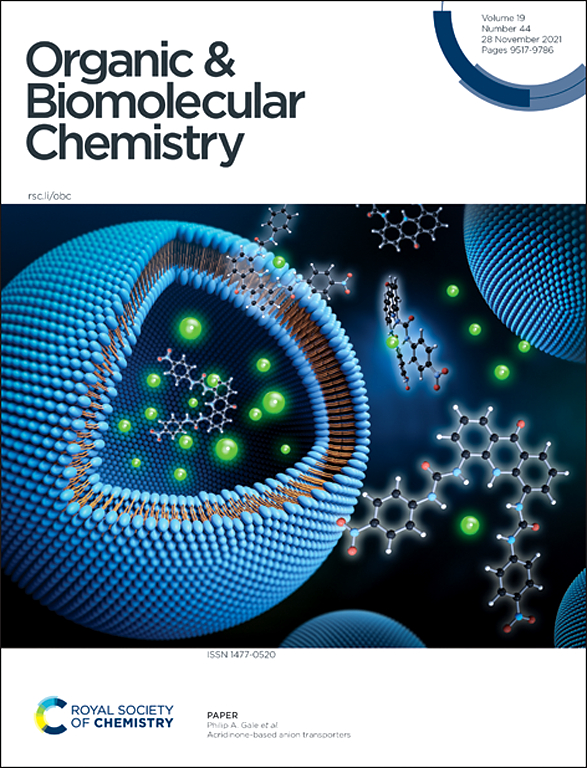Recent advances in green multi-component reactions for heterocyclic compound construction
IF 2.7
3区 化学
Q1 CHEMISTRY, ORGANIC
引用次数: 0
Abstract
Multi-component reactions (MCRs) are processes in which three or more reactants are introduced into one pot to obtain the final product with high atom efficiency, and in recent years, these have become a key strategy for advancing more sustainable processes in modern synthetic communities and the pharmaceutical industry. Meanwhile, minimizing the use of solvents, catalysts, time, reagents, and waste is essential during green chemical synthesis to reduce cost and environmental impact. Heterocycles are ubiquitous and have thus prompted the development of numerous methods for their synthesis. Among various strategies, MCRs represent one of the most promising routes for the synthesis of heterocyclic moieties such as quinolines, quinazolines, pyrimidines and imidazoles, which are widely recognized in nature and clinical evaluation. To promote greener syntheses, a significant body of literature detailing the synthesis of these biologically important compounds via environmentally friendly MCRs has emerged. This review focused on the recent advances in the green approach to preparing heterocyclic compounds via MCRs. These green approaches included photoredox catalysis, electrochemical activation, catalyst-free methods, and the use of water as the sole green solvent, reported between 2018 and 2024, highlighting their strengths and limitations. The synthesis of different types of heterocycles via green MCRs was covered. The substrate scope, reaction conditions, yields and mechanisms were also examined and discussed.

杂环化合物绿色多组分反应研究进展。
多组分反应是指将三种或三种以上的反应物引入一个锅中以高原子效率获得最终产物的过程,近年来,多组分反应已成为现代合成界和制药工业中推进更可持续过程的关键策略。同时,在绿色化学合成过程中,尽量减少溶剂、催化剂、时间、试剂和废物的使用,以降低成本和对环境的影响至关重要。杂环化合物是普遍存在的,因此促进了许多合成方法的发展。在各种合成策略中,mcr是合成喹啉类、喹唑啉类、嘧啶类和咪唑类等杂环基团最有前途的途径之一,在自然界和临床评价中得到广泛认可。为了促进绿色合成,大量文献详细介绍了通过环保型mcr合成这些具有重要生物学意义的化合物。本文综述了绿色合成杂环化合物的研究进展。这些绿色方法包括光氧化还原催化、电化学活化、无催化剂方法以及使用水作为唯一的绿色溶剂,这些方法在2018年至2024年之间进行了报道,突出了它们的优势和局限性。介绍了利用绿色微反应器合成不同类型杂环化合物的方法。对底物范围、反应条件、产率和反应机理进行了考察和讨论。
本文章由计算机程序翻译,如有差异,请以英文原文为准。
求助全文
约1分钟内获得全文
求助全文
来源期刊

Organic & Biomolecular Chemistry
化学-有机化学
CiteScore
5.50
自引率
9.40%
发文量
1056
审稿时长
1.3 months
期刊介绍:
Organic & Biomolecular Chemistry is an international journal using integrated research in chemistry-organic chemistry. Founded in 2003 by the Royal Society of Chemistry, the journal is published in Semimonthly issues and has been indexed by SCIE, a leading international database. The journal focuses on the key research and cutting-edge progress in the field of chemistry-organic chemistry, publishes and reports the research results in this field in a timely manner, and is committed to becoming a window and platform for rapid academic exchanges among peers in this field. The journal's impact factor in 2023 is 2.9, and its CiteScore is 5.5.
 求助内容:
求助内容: 应助结果提醒方式:
应助结果提醒方式:


